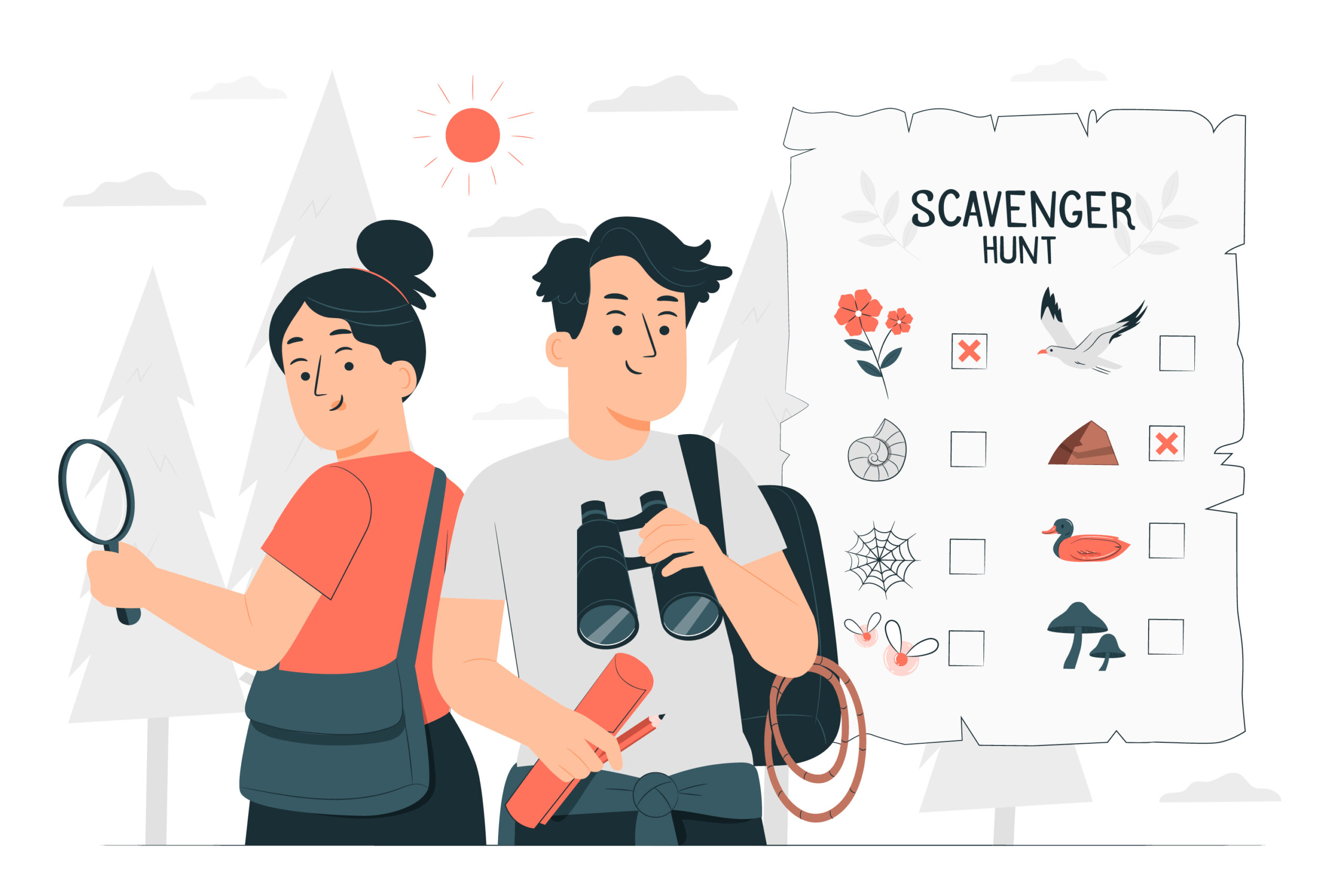Scavenger hunts are timeless — they spark curiosity, fuel teamwork, and turn any event into an adventure. But if you’ve been hosting them for a while, you might feel like your clue ideas are running a little stale. That’s where fresh, creative approaches come in.
This guide introduces 10 unique types of scavenger hunt clues that will surprise participants, challenge their thinking, and make your event unforgettable. Whether you’re planning an office team-building activity, a party game, or a family adventure, these ideas can easily be adapted to your theme and audience.
1. Photo Challenge Clues
Instead of just telling players where to go, make them show you they’ve been there.
-
How it works: The clue describes a location or object, and participants must take a creative selfie or team photo with it.
-
Example: “Find something taller than your team’s tallest player and take a funny group picture next to it.”
-
Why it works: It adds a creative layer and gives you great event photos for memories.
2. Emoji-Based Riddles
Replace words with emojis to create a visual puzzle.
-
How it works: Use emoji strings to hint at the location or object.
-
Example: 🐝📚 might lead to “Bee + Books” → the library section on nature.
-
Tip: Keep your emoji puzzles themed — like food emojis for a kitchen hunt.
-
Why it works: It’s fun, universal, and appeals to all ages, especially younger players.
3. Puzzle Piece Clues
Turn the hunt into a jigsaw mystery.
-
How it works: Each location gives a piece of a puzzle (physical or printed). Players must collect all pieces to reveal the final location.
-
Example: The completed puzzle might show a map, a logo, or a message.
-
Why it works: It builds suspense and requires cooperation until the very end.
4. Rhyme-Time Clues
Make your scavenger hunt clues rhyme for an extra creative twist.
-
How it works: Craft riddles where the rhyming lines contain location hints.
-
Example:
“I’m filled with stories, but I’m not a book,
To find your next clue, it’s here you should look.” -
Why it works: Rhymes make clues more memorable and fun to solve.
5. Map Fragment Clues
Hand out partial maps that players must combine.
-
How it works: Each clue location gives part of a map; the final location can only be found when all pieces are joined.
-
Example: A park hunt might have four quadrants of the park map distributed across challenges.
-
Why it works: It encourages teamwork and strategic thinking.
6. Hidden Code Clues
Make participants decode messages before they can proceed.
-
How it works: Use ciphers, Morse code, or simple substitution (A=1, B=2) to conceal the location.
-
Example: “20-5-1-13” → “TEAM” might be written on a locker where the next clue is hidden.
-
Tip: Offer decoding tools at certain checkpoints for fairness.
-
Why it works: Adds a spy-like element for mystery lovers.
7. Sound or Song Clues
Use audio hints to guide players.
-
How it works: Play a short clip of a sound or song related to the next location.
-
Example: A clip of a dripping faucet leads to the kitchen sink.
-
Why it works: Engages players’ listening skills and creates variety beyond reading clues.
8. Reverse Scavenger Clues
Make players bring an item to match the clue instead of finding a hidden one.
-
How it works: Give a descriptive or riddle-based clue, and players must find any object that matches it in the given area.
-
Example: “Something red that isn’t food” → could be a red stapler, a scarf, or a sign.
-
Why it works: Encourages creative thinking and resourcefulness.
9. QR Code Clues
Add a tech touch with scannable clues.
-
How it works: Place QR codes at various locations; scanning reveals the next hint.
-
Example: The QR code might display text, an image, or even a mini-video clue.
-
Why it works: Feels modern, is easy to update, and works well for hybrid/indoor hunts.
10. Mystery Object Clues
Instead of telling them where to go, describe an object they must find and bring back.
-
How it works: The clue gives only vague details, requiring observation skills.
-
Example: “I’m soft, round, and can bounce — but I’m not alive.” → A plush ball.
-
Why it works: Adds a tactile, hands-on challenge to your scavenger hunt.
Tips for Writing Effective Scavenger Hunt Clues
Regardless of the type, great scavenger hunt clues share a few traits:
-
Clarity – Avoid overcomplicating; make sure the solution is fair.
-
Balance – Mix easy and hard clues to keep participants motivated.
-
Engagement – Use humor, puns, or surprising twists.
-
Relevance – Tie clues to your theme or event setting.
How to Organize Your Unique Scavenger Hunt
-
Define the Objective – Is it for fun, team bonding, education, or a fundraiser?
-
Pick Your Clue Types – Use a mix from the 10 ideas above for variety.
-
Plan the Route – Ensure safety, accessibility, and logical flow.
-
Test Your Clues – Run a trial with a small group to catch issues.
-
Add a Reward – Even small prizes make the game more exciting.
Common Mistakes to Avoid
-
Overly vague clues that frustrate players
-
Forgetting to check if all clue locations are accessible
-
Making the hunt too long or too short
-
Not preparing a tie-breaker in competitive hunts
Final Thoughts
Refreshing your scavenger hunt clues can make all the difference in keeping participants engaged and excited. Whether you opt for playful emoji puzzles, clever rhymes, or high-tech QR challenges, the key is variety, clarity, and fun.
So the next time you plan a scavenger hunt, step outside the box — or better yet, hide the box and make your players find it.

